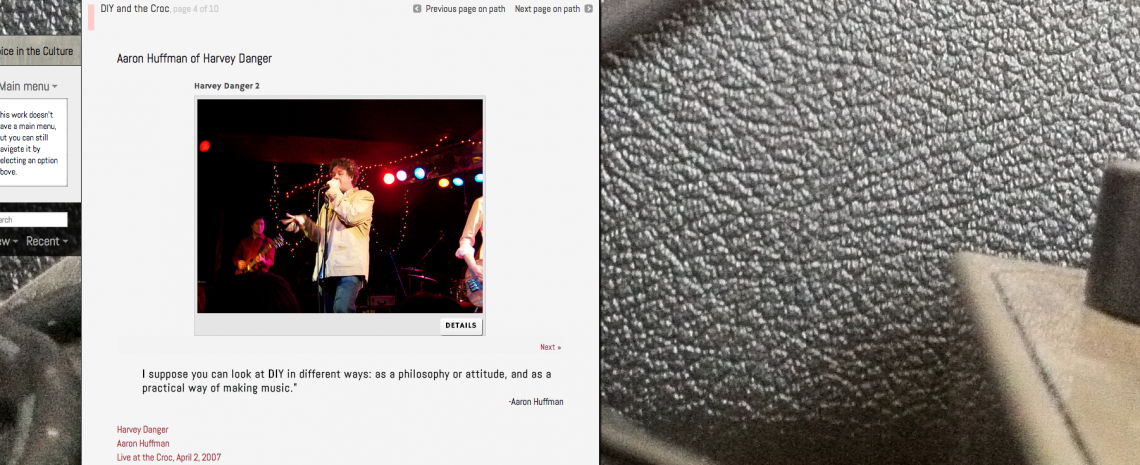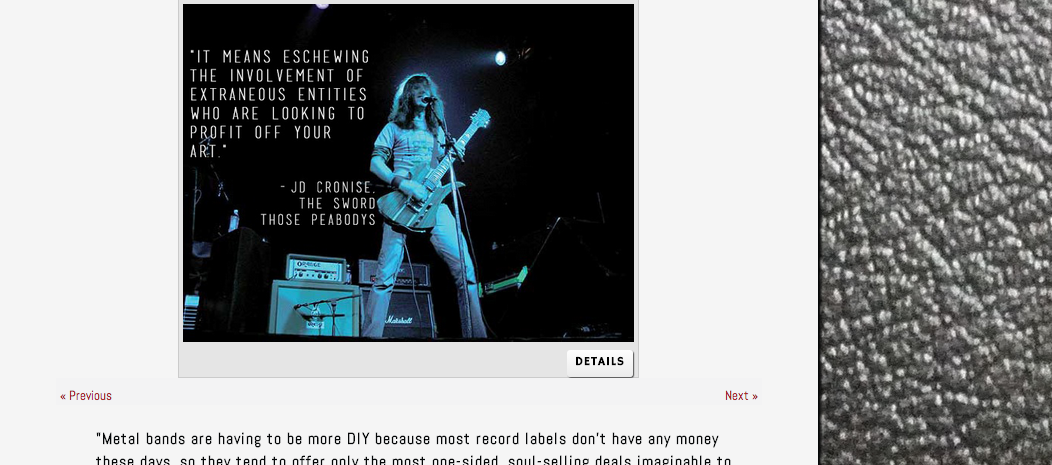Now that a draft of the Crocodile Cafe Exhibit is basically complete, I’ve started contemplating ways to approach the presentation of information (i.e., narrative and metadata) and media for users of the site. These issues naturally turn back towards questions related to purpose and audience—how should we write the exhibit’s narratives, and how should we present the media? How do the topics covered by the exhibit situate themselves in history, and how do we present such a situating to users?
I keep returning to the notion of access, which, as an ethos, guides nearly every aspect of this project—from Jim Anderson’s creation and donation of the Croc Collection (as a way for music fans to access materials related to a specific part of Seattle’s history) to questions of design relating to the exhibit itself. For example, accessibility has dominated my questions about the design of the interface: how will users—whose primary reasons for visiting the exhibit may be to access either the exhibit’s media or narrative content (or both)—interact with the site? How will their options for navigation affect their experience of the exhibit? And conversely, how do you make an exhibit narrative meaningful for the media-centric user?
This again begs the question of audience, but it also involves a discursive relationality between design and use; in order to contextualize the significance of the collection, it is important that media and narrative point to each other. In other words, the media, both of the site itself and what the site points to, is less meaningful without the context provided by the narrative. Conversely, the narrative is illustrated in a meaningful way by the various ways in which the user can interact (or access) the media as they read through the site. To this end, I’ve started looking at public sites with similar media content, such as allmusic.com (which has narrative, visual media, and short audio clips), in an attempt to better understand how the interplay between media informs the user’s experience.
I also think that do-it-yourself (DIY) culture—the overarching topic covered by “A Voice in the Culture,” the exhibit’s subtitle—can be integrated into the process of the site’s design, too. DIY is a major theme in my master’s thesis work (specifically how DIY, as a political concept, is historically contingent), so I spend a lot of time thinking about it. That said, in the interest of keeping my blog posts short, I’ll take up this thread of thought in my next entry. Toodles!
Post by Shaun Macpherson, attached to the CrocCafe project, with the exhibits tag. Featured images for this post care of the Crocodile Cafe Exhibit, built using Scalar.



Pingback: Maker Lab in the Humanities » University of Victoria » The AAB Exhibit: An Assessment()